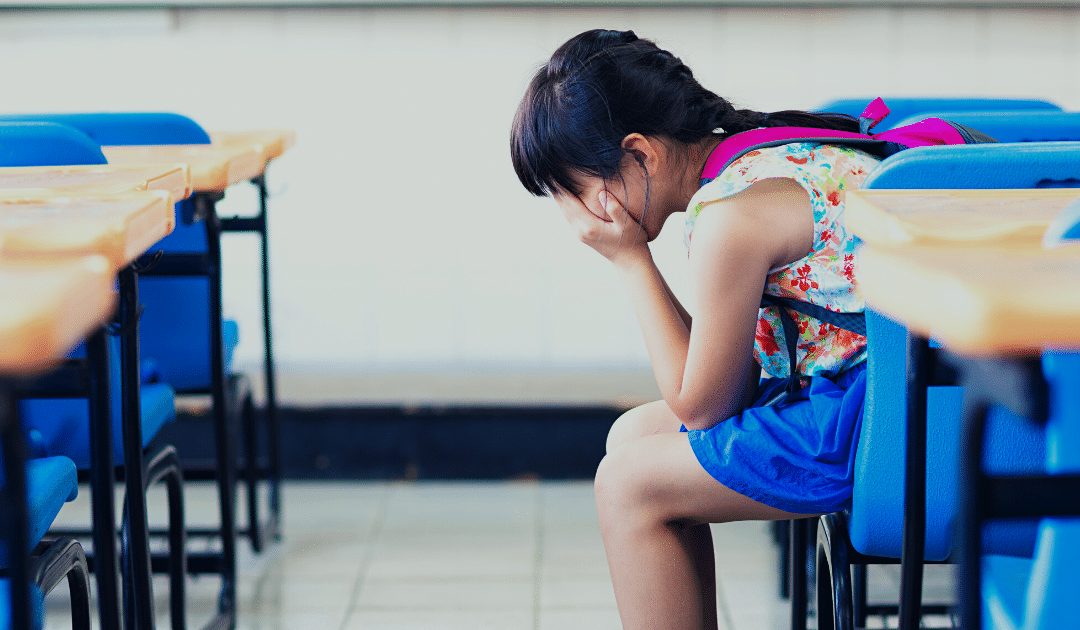Coronavirus has taken its toll on the world, mentally and physically, and after almost an entire calendar year of adapting to the constant changes in education, our teachers are not the only ones who are feeling the effects. Students across the country have had their lives turned upside down more times than they can count within the last year- virtual classes, hybrid learning, not getting to spend time with their friends, avoiding public places, no birthday parties, spending their vacation-time indoors, wearing masks, not seeing their older relatives, etc. It’s no secret adjusting to our new normal has been stressful and hard on them.
As a teacher, your students trust and confide in you- sometimes more than their own parents- so oftentimes you play a critical role in helping them manage their own mental health, especially amidst a pandemic. By creating an environment that is safe and comfortable you can aid in helping them cope with their anxious or depressing thoughts and feelings, and catch issues before they become major problems.
Here are 4 easy ways you can create a classroom culture that encourages positive mental health.
1. Create a Safe Space for Conversation
You can support the mental health of all of the students in your class by fitting in small lessons or units informing them about mental health, the symptoms, and what they can do for support. Normalize talking about feelings and the importance of mental health in your classroom, like you talk about the importance of physical health. Giving your students a safe space to discuss in your classroom will let them know that those anxious thoughts are, “normal” and that they are not the only ones feeling that way. The more you talk about common thoughts, feelings, and actions related to mental health, the better your students will be able to understand and identify them within themselves. Students and parents alike will benefit from knowing more about mental health issues and how they can cope and work through them.
2. Check in With Your Students
Checking in with your students will give you insight into their feelings, so will have foresight into what the day ahead will look like, and so you can follow up with them (or if it’s serious or consistent, with their parents) and see why they are feeling the way they are. There are a ton of different ways you can check in with your students. Many teachers use Mental Health Check-In Charts in their classrooms, so students can let the teacher know how they are feeling at the beginning of each day. If you’re teaching virtually, you can still use the same method, just have each student send an emoji or word that describes their feelings. If you would prefer to do check-ins more privately, you can have students keep a daily journal where they write a few sentences each day about their feelings and then submit them.
3. Create a Positive Learning Environment
Creating a positive environment for students means not only encouraging positivity, but it also means making your classroom (or virtual classroom) somewhere that your students feel comfortable, like they belong, can take risks, tackle challenges, and trust others. Some easy ways you can encourage these behaviors in your room include, incorporating engaging lesson plans and experiments, using fun technology or apps (like Kahoot), adding more group work and projects, bringing in flexible seating, and adding decor that encourages positivity and kindness like: posters, sticky notes, bulletin boards, etc. Not only does a positive environment help with students’ mental health, but it also has proven to boost students learning and academic success up to 25%.
4. Incorporate Some Brain Breaks Into Your Day
Brain breaks are an important part of the educational day, and they are great for student, and teacher, mental health! However, they are sadly often overlooked and forgotten about due to lack of planning and time. Brain breaks have multiple benefits including better behavior, increased productivity and mood, enhanced comprehension, creative thinking, and increased time on task. Because children’s brains cannot focus on one subject for too long, using short brain breaks between lessons have proven to help students pay more attention and succeed more overall in the classroom. Examples of easy brain breaks you can incorporate into your day include: a yoga video, short dancing session, 2-minute stretches, short meditation, taking a small walk around the classroom, or just closing their eyes and taking a minute to relax.
Even with a positive classroom culture, some students can still struggle with their mental health. As a teacher, it is important to know the signs of students that may need help.
Here are some behaviors to keep an eye out for:
-
- Feeling sad, extremely tired, or withdrawn for more than two weeks
- Has or expressed intentions to harm themselves or others
- Intense worries or fears that make them unable to do daily tasks
- Severe mood swings or changes in personality
- Frequently causing problems or interrupting class
- Having difficulty concentrating
If you see a student who is struggling week after week and not making any improvements, it’s time to reach out to parents, school counselors, or nurses for additional help.
This article is furnished by California Casualty, providing auto and home insurance to educators, law enforcement officers, firefighters, and nurses. Get a quote at 1.866.704.8614 or www.calcas.com.
- Graduation – When to Remove Your Child from Your Auto Policy - May 18, 2023
- How to Prevent Catalytic Converter Theft - May 17, 2023
- How Much Does Home Insurance Cost? - May 17, 2023

